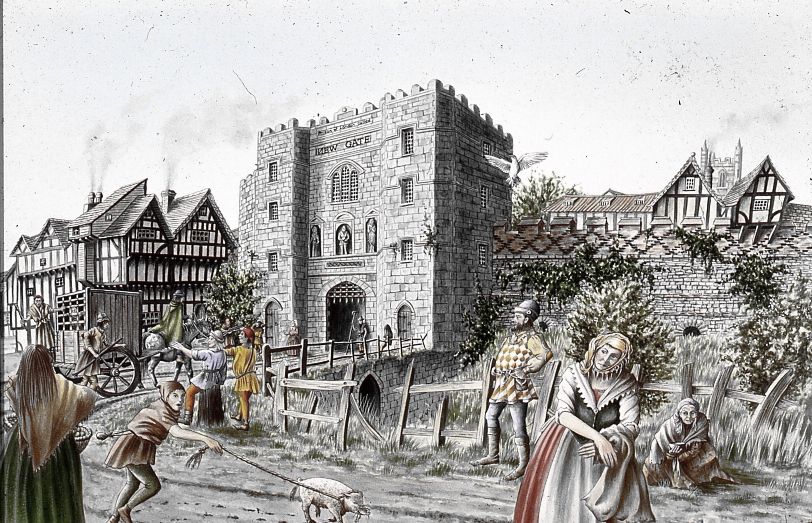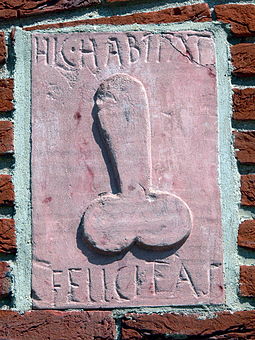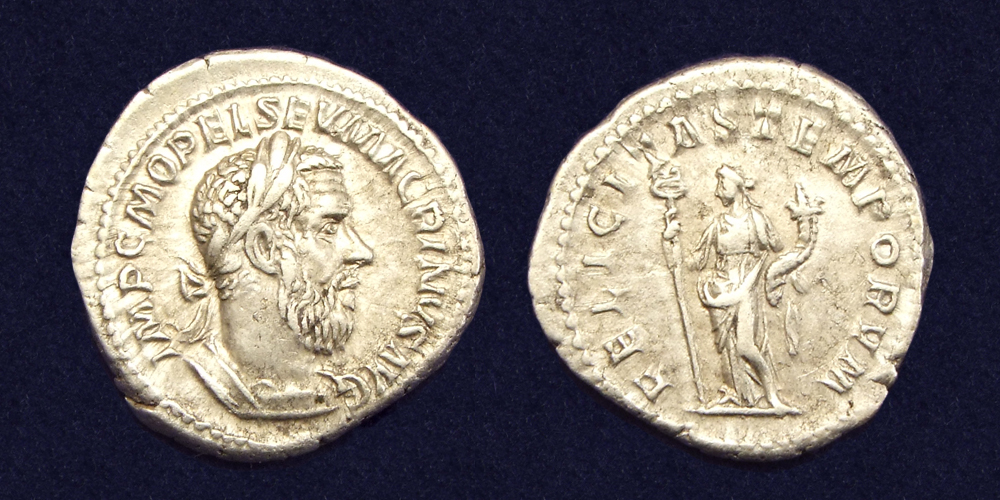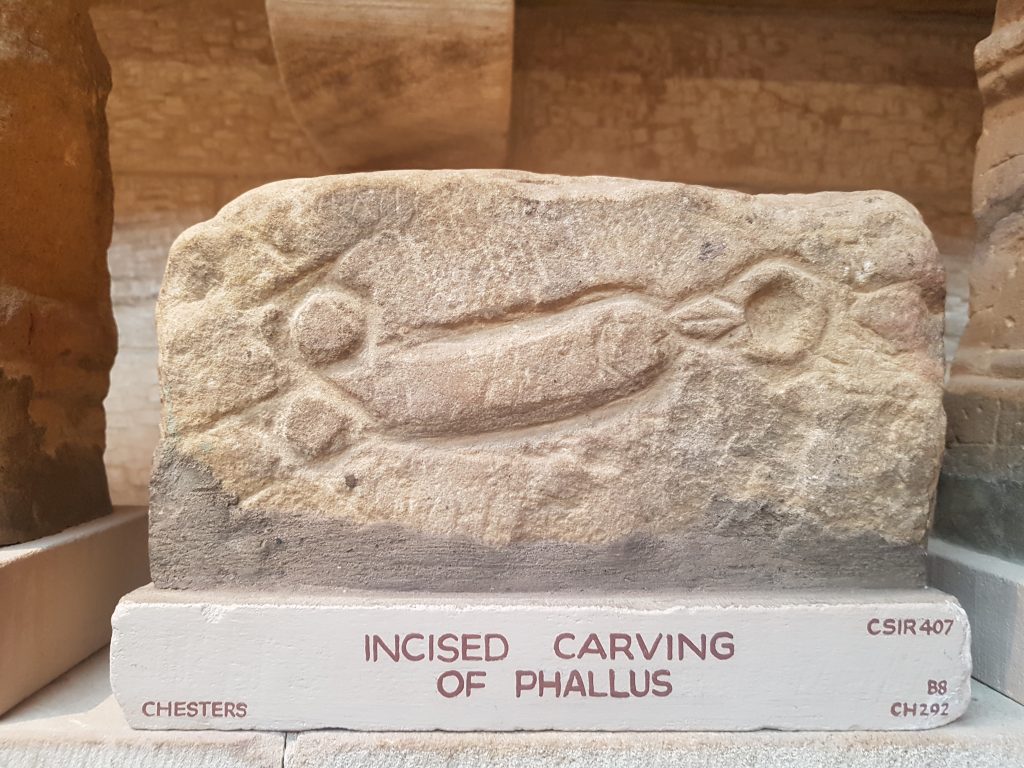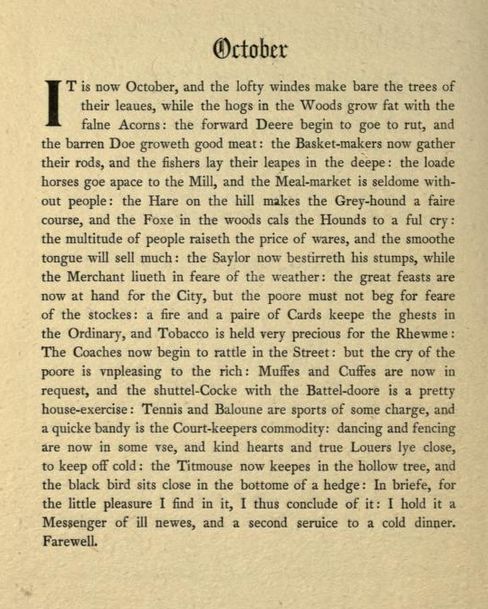
Today is the anniversary of the most fateful battle in British History. The victory by William the Bastard led to over 300 years or so of control of England by a French aristocratic elite.
French replaced English as the language of the ruling elite which, over the long term, changed the English language to a powerful, nuanced hybrid language.
Arguably, it also established a class system in which the ruling class was separated from the ruled by language, education, culture, and wealth. And which has reverberations down to the present time.
It pivoted England from a North Sea power to a European state. And it may have contributed to England becoming a less community-based society. To put it briefly, if England had remained focussed on the North Sea region, might we now have a society more like the Scandinavian Countries? – more willing to spend money on the public realm, a more equal and a happier society? A society in which the elite are less willing to educate their children in fee paying schools separate from the people of the country?
Harold’s Strategic Errors
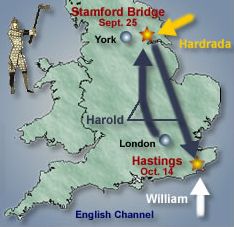
Personally, I’m quite angry with King Harold II. He should have won the Battle of Hastings, or at the very least made sure that defeat at that battle did not mean conquest by the Normans.
Harold was in a strong position following the astounding victory over Harold Hadarada at Stamford Bridge, in Yorkshire. Particularly, if Harold Had not rushed to confront William, but rested and gathered his troops. This would have allowed his troops to recover and give time for fresh troops to join him .See my posts on the Battle of Stamford Bridge and the Battle of Fulford.

While waiting, Harold could have arranged the harrying of William’s army. Attacked their supply lines, increasing their anxiety, and sapping their resolution. When Harold had reached maximum strength, then would be the time to take on the weakened Norman Army.
But also, he should have had a succession plan. What would happen if he lost the battle? Who was to succeed him? As it was, he took his two brothers with him to the Battle, where all three of them died, leaving no clear adult heir to the throne. The English soon surrendered to William after the Battle of Hastings, precisely because there was no clear adult successor, unless that person was William himself.
Why did the English surrender to William?
Given the catastrophe for the English ruling class that William inaugurated, it’s difficult to understand why the English magnates decided to accept William as King. But let’s have a shot at looking at it from their perspective, they remembered that the reign of King Cnut, a Dane, created a successful fusion of English and Danish culture that was more stable than that of the weak English King Edward the Confessor. So, recent history taught: better a strong foreign King than a weak English King.
They were not to know that William would ensure that virtually all English nobles, church leaders, language and culture, would be swept aside and replaced by Norman and French alternatives. England would never be the same.
The Battle of Hastings
As to the Battle itself, there is no definitive account of what happened. We don’t know the composition of the armies nor their number. Estimates vary from 7,000 to over 20,000. But it was a ferocious battle which lasted all day and was often in the balance.
Harold fought the battle early, probably for 2 main reasons. Firstly, he had won the Battle of Stamford Bridge with the same tactics of fighting immediately after a long march, surprising the enemy and winning an overwhelming victory. Secondly, William had landed on Harold’s own personal land and Harold would not have easily borne a foreign power devastating his people.
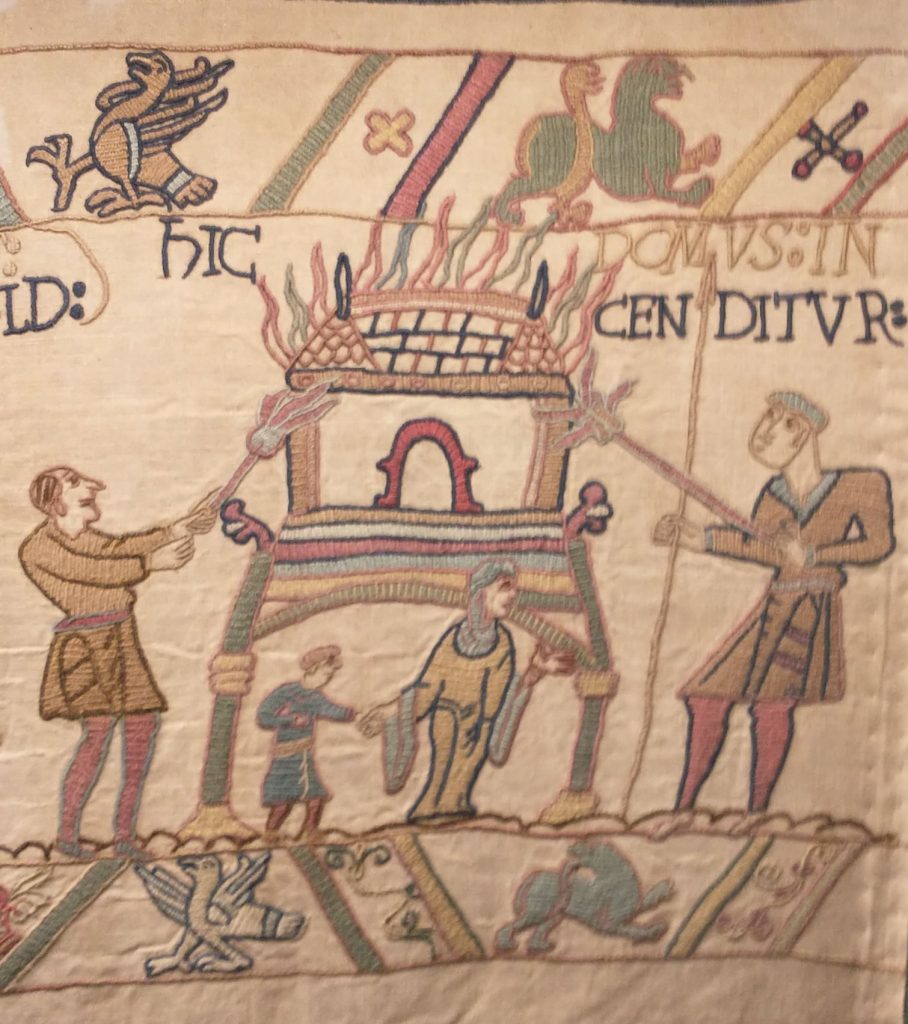
Reading Museum copy of the Bayeaux Tapestry Photo Kevin Flude
So, he matched as quickly as he could from London to Senlac near Hastings, where Battle Abbey would be later sited. He chose the top of a ridge, with a stream or ditch in front of it. William accepted battle and fighting began early in the day. Troops were still arriving to reinforce Harold. All he needed to do was hold his ground till dark and reinforcements would probably have made William’s position untenable.
Harold would have established his shield wall, although there are suggestions this was done while the Normans attached.

Reading Museum copy of the Bayeaux Tapestry Photo Kevin Flude
Harold seems to have held the ground until late afternoon. There are suggestions that his army was weakened by their rash pursuit of the retreating Normans down the hill. The Normans thought William was killed but he showed his face to reassure his troops, rallied his troops and turned on the English who, without the protection of their shield wall and the high ground, were badly mauled. The Normans renewed their attack.
At some point Harold’s brothers were killed, followed by Harold himself, possibly after being injured in the face by an arrow, but that is not proven.
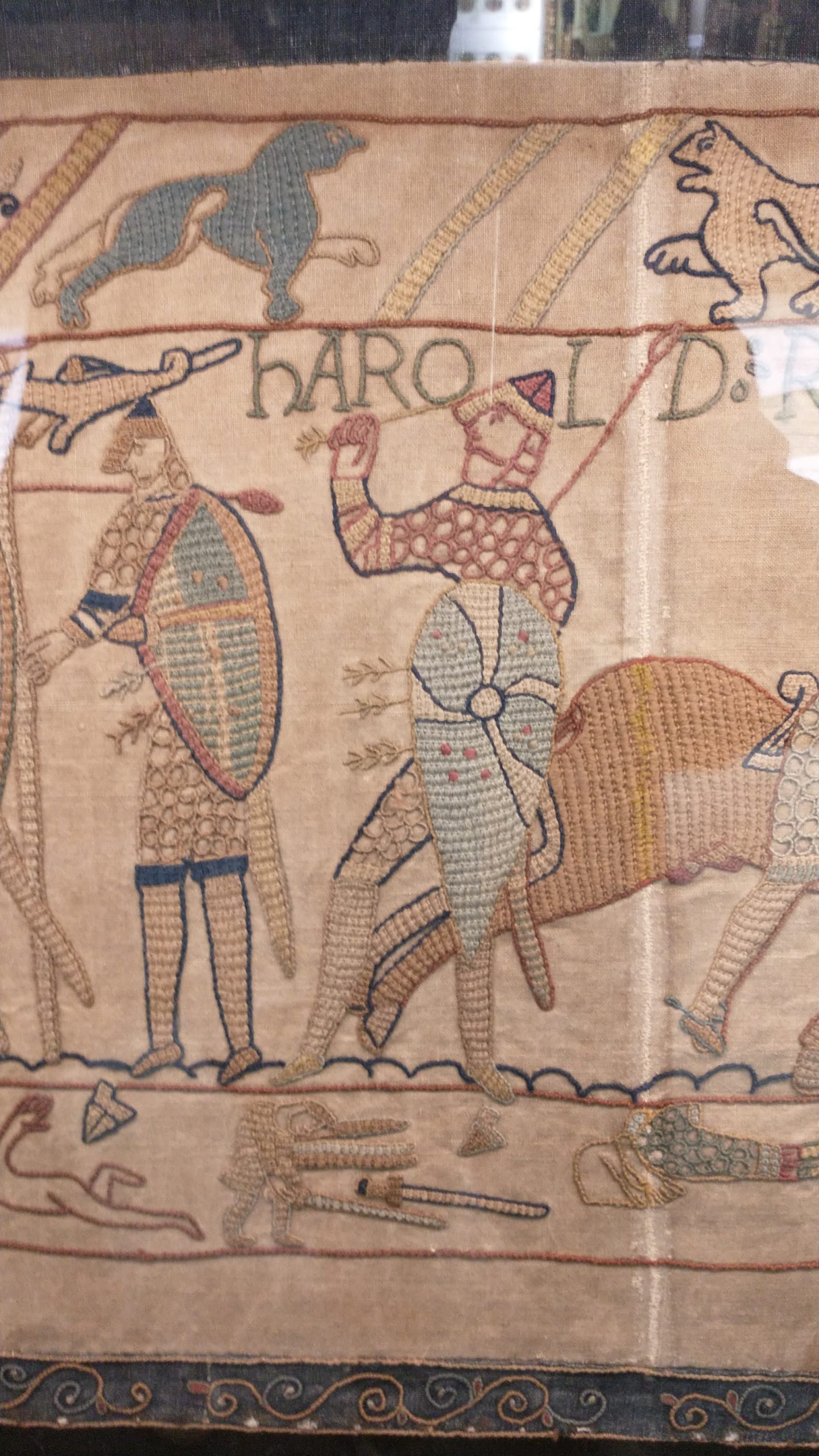
Reading Museum copy of the Bayeaux Tapestry
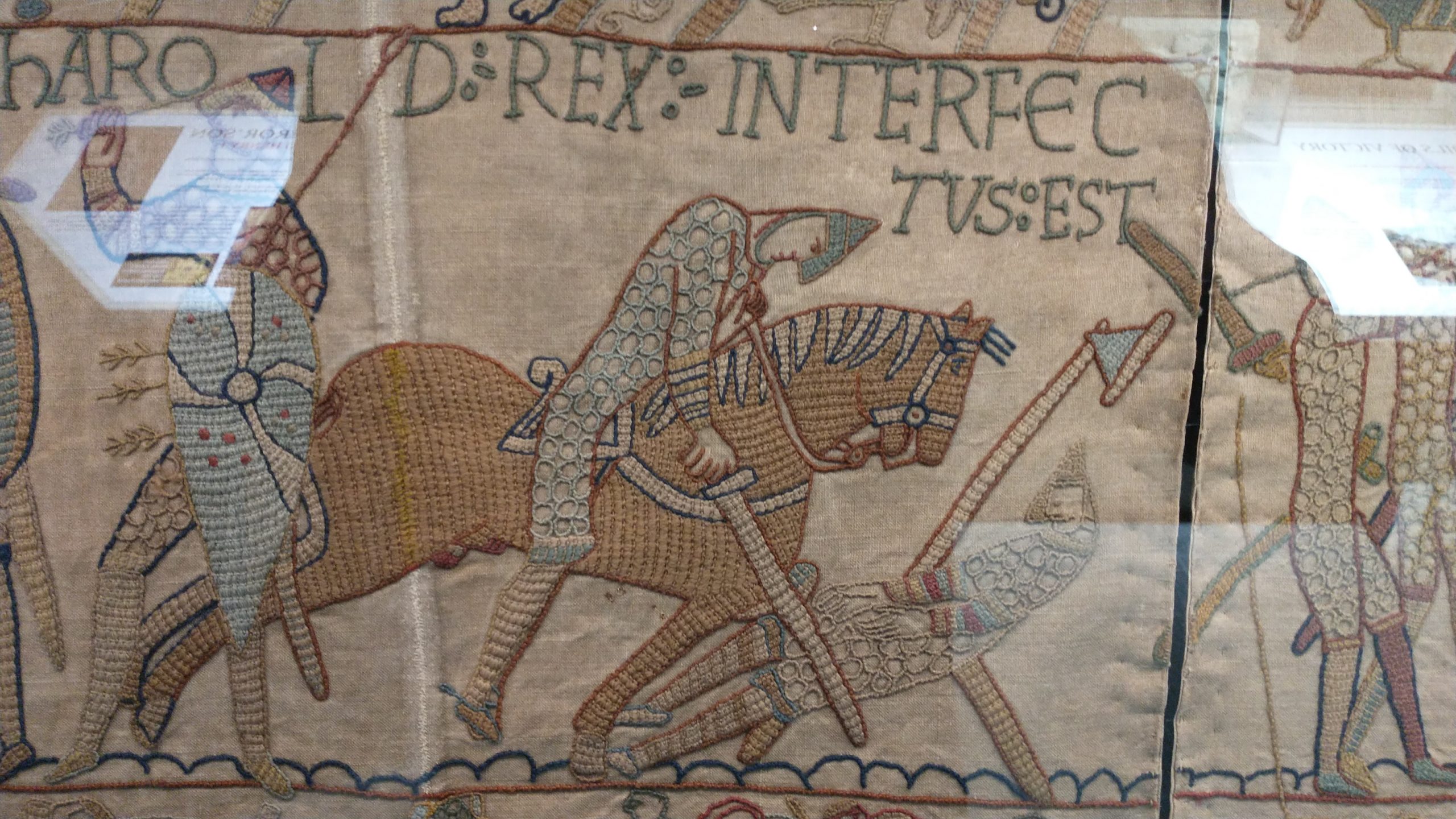
Reading Museum copy of the Bayeaux Tapestry
As darkness fell the English retreated, pursued by the Normans. The English fled back to London. In the following days, the Normans attached London Bridge, but Londoners stoutly defended the Bridge. They were led by the Portreeve Ansgar. He h ad been wounded at Hastings and was carried in a litter during the siege. The Portreeve was the King’s official in London, similar to a Shire Reeve. He also had the Danish title of ‘Staller’. The next day the Witangemote met in London and elected Edgar the Atheling as King. He was a nephew of Edward the Confessor, but only about 14 years old.
The Normans retreated from London and proceeded to harry the South, trying to find a crossing point over the Thames. We will return to the story in the following weeks.

Charlie Watts and the Bayeaux Tapestry
Charlie Watts owned a 19th Century reproduction of the Bayeaux Tapestry and this has recently been sold. It was photographed by a V&A photographer. ( To see more follow the link below.
The Tapestry is also coming to the UK on exhibition at the BM in 2026
On This Day
1586 Mary, Queen of Scots put on trial accused of Treason
1964 Martin Luther King wins Nobel Peace Prize. (see also my page on his visit to St Pauls Cathedral)
First Published in 2024, revised 2025
